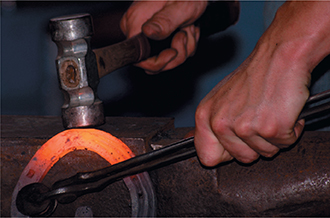Figure 21 A blacksmith uses a hammer to shape a horseshoe that has been heated. Although the color of the iron horseshoe changes, no chemical change is occurring. Inferring Other than color, what physical property of iron is affected by heating?

Is a Change Chemical or Physical?
It is not always easy to distinguish a chemical change from a physical change. Even if yo observe a color change, a gas, or a precipitate, yo cannot be sure that a chemical change has taken place. When the iron horseshoe in Figure 21 is heated, its color changes from gray to red. Despite this change in color, the iron is still iron. When water boils on a stove, the bubbles of gas that rise to the surface are still water.
Before yo decide whether or not a chemical change has occurred, ask yourself this question: Are different substances present after the change takes place? If not, then the change is physical, not chemical.
 When matter undergoes a chemical change, the composition of the matter changes. When matter undergoes a physical change, the composition of the matter remains the same.
When matter undergoes a chemical change, the composition of the matter changes. When matter undergoes a physical change, the composition of the matter remains the same.
Section 2.3 Assessment
Reviewing Concepts
 Under what conditions can chemical properties be observed?
Under what conditions can chemical properties be observed? List three common types of evidence for a chemical change.
List three common types of evidence for a chemical change. How do chemical changes differ from physical changes?
How do chemical changes differ from physical changes?Explain why the rusting of an iron bar decreases the strength of the bar.
A pat of butter melts and then burns in a hot frying pan. Which of these changes is physical and which is chemical?
Critical Thinking
Comparing and Contrasting Compare the properties of a raw egg to those of a hard-boiled egg.
Classifying If yo spill household bleach on denim jeans, yo will observe that the area of the spill no longer has a blue color. Is this change chemical or physical? Give a reason for your answer.
Inferring Gold and platinum are often used to make jewelry. What can yo infer about the reactivity of these elements?
Connecting Concepts
Scientific Methods Section 1.2 listed typical steps scientists use. Which steps might yo use to decide whether a change is physical or chemical? Explain.




